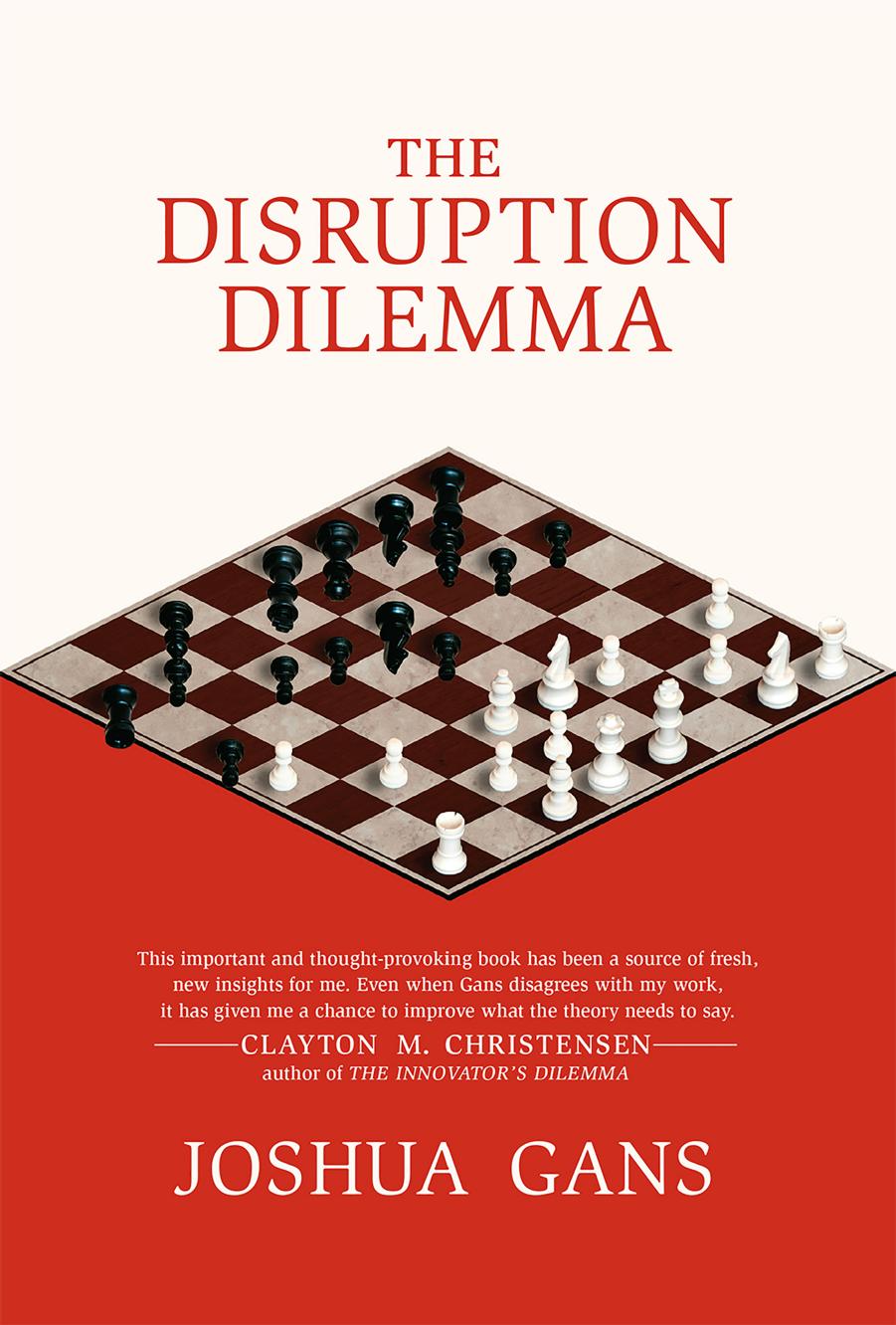The Disruption Dilemma by Joshua Gans

Author:Joshua Gans
Language: eng
Format: epub, pdf
ISBN: 9780262034487
Publisher: The MIT Press
Published: 2016-02-23T16:28:19+00:00
Wait and Double Up
Sometimes when an existing organization is threatened, it doubles down on its historic strengths, reinvesting in them in hopes of warding off a threat. RIM did this with the Storm, keeping its historic strengths while meeting just one flaw in its offerings—the small screen. By contrast, we could use “doubling up” to describe a situation in which an existing organization meets a threat by changing its focus and investing in new areas at an accelerated rate. Disruption theory tells us, at a minimum, that doubling down may be a bad idea. By contrast, the replacement effect suggests that “doubling up” is a hard thing to do. However, as time goes on and the nature and reality of a disruptive event are realized, the returns to doubling up increase significantly.
To see this, consider a situation in which an established firm is convinced that a new entrant has an innovation that will threaten it competitively. In this situation, there is no future in which the firm can keep doing what it is doing and be free of competition. That competition is inevitable, and hence replacement is already taking place. In this situation, the established firm is now on an equal footing with the new entrant in terms of their incentives to introduce the new product. This is the situation the Times now finds itself in. It has assessed that new entrants will now be gaining ground with the paper’s own customers unless it adopts the technologies—digital, social media, and the like—that the entrants have been using. Hence, its response is to try to replicate the new entrants’ approaches to digital news production and distribution. You can see this in the Times report’s recommendations: to focus on audience development (e.g., moving from page one to things like social media to find readers), to bring technology into the newsroom by having it more integrated with the business side that is focused on reader experience, to embed a strategy team inside the newsroom to create linkages and digital experiments, and finally to be a digital-first organization. Each of these is an investment to make the product of the Times more similar to those of its newest rather than its traditional competitors.
In contrast, throughout the report the Times also senses that it has an advantage precisely because its traditional customer base is still loyal. That is, it sees an opportunity to adopt the new digital tools but to keep a relatively exclusive hold over its traditional base. For this reason, the report does not challenge the notion that the Times should be investing in the production of quality journalism that its traditional base values. From that perspective, the investment equation for the Times becomes different from that of new entrants. Economists Richard Gilbert and David Newbery explained in 1981 that when an established firm can defend a monopoly segment against innovative entry through investment, its incentive to protect its monopoly will be greater than the incentive for new entrants to invade.18 The established
Download
This site does not store any files on its server. We only index and link to content provided by other sites. Please contact the content providers to delete copyright contents if any and email us, we'll remove relevant links or contents immediately.
Bad Blood by John Carreyrou(6276)
Rich Dad Poor Dad by Robert T. Kiyosaki(6176)
Principles: Life and Work by Ray Dalio(5961)
Playing to Win_ How Strategy Really Works by A.G. Lafley & Roger L. Martin(5502)
Management Strategies for the Cloud Revolution: How Cloud Computing Is Transforming Business and Why You Can't Afford to Be Left Behind by Charles Babcock(4438)
The Confidence Code by Katty Kay(4039)
Thinking in Bets by Annie Duke(3996)
American Kingpin by Nick Bilton(3508)
Delivering Happiness by Tony Hsieh(3283)
Project Animal Farm: An Accidental Journey into the Secret World of Farming and the Truth About Our Food by Sonia Faruqi(3018)
The Power of Habit by Charles Duhigg(2966)
Brotopia by Emily Chang(2897)
Mastering Bitcoin: Programming the Open Blockchain by Andreas M. Antonopoulos(2892)
The Tyranny of Metrics by Jerry Z. Muller(2847)
I Live in the Future & Here's How It Works by Nick Bilton(2844)
The Marketing Plan Handbook: Develop Big-Picture Marketing Plans for Pennies on the Dollar by Robert W. Bly(2795)
The Content Trap by Bharat Anand(2778)
Building a StoryBrand by Donald Miller(2754)
Applied Empathy by Michael Ventura(2752)
